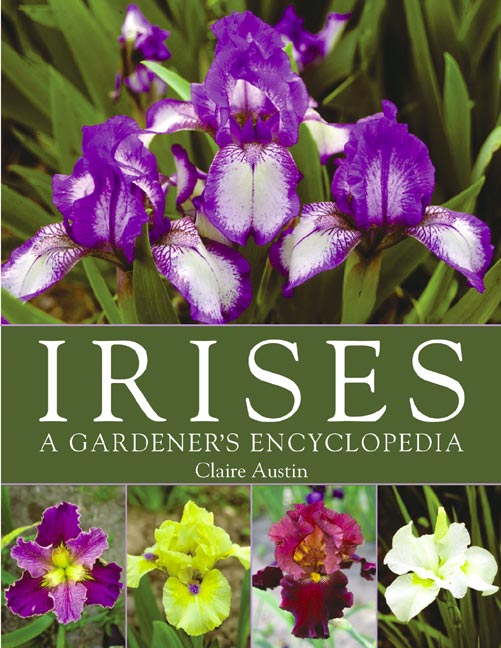IRISES: A Gardener’s Encyclopedia, Claire Austin, Timber Press (October 15, 2005), 340pp, 1155 color photos, hardcover; publisher's price: $49.95; Amazon price: $32.97.
Of all the books on the genus Iris that I have read, this is the best illustrated with over 1,100 photographs of iris in the garden and in their native habitat. The title of the book might lead you to believe that all iris species are described; however, as the author clearly states not every species is included since some iris species are too rare or difficult to cultivate. A photo and brief description of a number of species, sub-species and hybrids are included in the text. The author refers those who want to know more about species to The Iris by Brian Mathew (1981) and Iris by Fritz Kohlein (1987). Using the text, I looked up several species of iris seeds that I received from the NARGS Seed Exchange; the majority of the iris species I looked up were included.
The encyclopedia is a large format book with clear, beautiful photographs of the wide variety of species and hybrids described. As James W. Waddick, the author of The Iris of China states in the Forward, “There are irises for the rock garden, containers, or the perennial bed. The text invites, no dares, you to try more and different kinds of iris.”
The author, Claire Austin, is David Austin’s daughter and has worked for many years with her father at David Austin Roses. She and her husband established Claire Austin Hardy Plants in Shropshire, England. The cultivation information comes from her experience in her English garden, which may have to be adjusted to other locations.
The information is logically divided into Bearded (including horticulture classifications), Beardless, and Bulbous Iris, then into Series and the species within each grouping. The largest section of these descriptions (180 pages) is the Bearded group including many horticulture hybrids. The Beardless group, which includes the greatest number of species and hybrids, covers less space (77 pages). The Bulbous iris, with fewer species, is the smallest (16 pages). Although the information is directed to the average gardener rather than the botanist or plant specialist, there is excellent information on the iris species, including the species used to create hybrids, countries where the irises grow, the habitat where the iris flourish, growing conditions, and descriptions of the foliage and flowers. The species and hybrids are illustrated with excellent photographs that allow the reader to see the unusual or rare irises. I can’t help but wish this book came with a DVD of the irises pictured.
The rock gardener is not forgotten. The author identifies irises that are best for the rock garden in stature and growth. Growing conditions are identified in the descriptions of the iris, under basic cultivation.
The fourth part of the book, on cultivation, follows the iris bloom progression in the garden from spring through autumn. There is a discussion about growing iris in containers. Other information on growing conditions is scattered throughout the book. Austin suggests flower companions for iris through the seasons and for specific conditions, e.g. in shade, moist areas, and hot and dry. How to hybridize, germinate seeds and grow iris are are briefly covered, as are iris pests and diseases. Various iris societies and reliable nurseries that sell iris in the United States, England and other countries are listed.
I enjoyed reading this book and looking up information on various species and hybrids and how to grow them. If you love iris, you will want to have this book in your library.
Bobbie Lively Diebold lives and gardens in Front Royal, VA, where she grows many varieties of Iris. She is a member of the Potomac Valley Chapter of NARGS.

